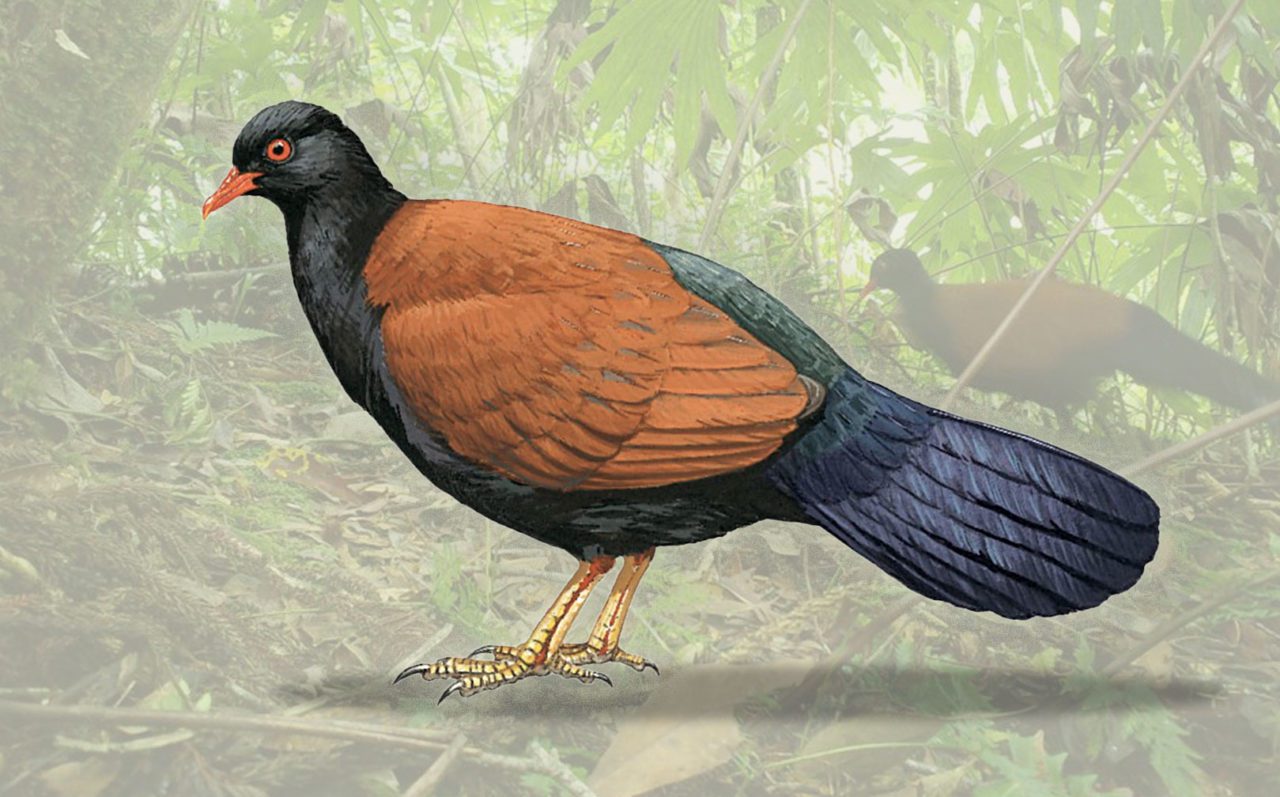From the Winter 2022 issue of Living Bird magazine. Subscribe now.
Ten seconds of video turned despair to jubilation for an exhausted group of scientists after weeks of slogging through rainforests in Papua New Guinea last September. The video depicted a creature not scientifically documented for 140 years: the Black-naped Pheasant Pigeon.
“For much of the trip, it seemed like we had no chance of finding this bird,” admits Jordan Boersma, co-leader of the expedition and a postdoctoral researcher at the Cornell Lab of Ornithology. The month-long expedition finished by collecting the first-ever video and still photos of the Black-naped Pheasant Pigeon via a remote camera trap on Fergusson Island, just off the eastern coast of the island of New Guinea. “We were just two days away from the end of our time … when one of our remote cameras recorded the bird walking around and fanning its tail.”
“Seeing those first photos of the pheasant pigeon felt like finding a unicorn,” says John C. Mittermeier, director of the Search for Lost Birds project at American Bird Conservancy. The expedition team included members from ABC, the Cornell Lab, and the Papua New Guinea National Museum, along with local Papua New Guineans.
The Black-naped Pheasant Pigeon is a large, ground-dwelling bird with a bobbing pheasant-like tail. It may only exist far inland on Fergusson Island in hot, extremely rugged geothermal terrain laced with twisty rivers and dense with biting insects and leeches.

Scientists know little about the Black-naped Pheasant Pigeon apart from two specimens collected in 1882, although the bird has been seen several times over the years by local hunters. Tapping into Indigenous knowledge was key to the expedition’s success. Augustin Gregory, a hunter from the village of Duda Ununa, advised the team on areas that were likeliest to hold a pheasant pigeon. Local bird expert Doka Nason set up the camera that eventually recorded the bird. “When I saw the photos, I was incredibly excited,” he says. “I was jumping around yelling ‘We did it!’”
But there’s worry mixed with elation. The principal landowner of the forest where the bird was found told the search team that he’d just signed a deal with a logging company—a move that could threaten the Black-naped Pheasant Pigeon and its habitat. The team is pursuing funding for a return to Fergusson Island to find out how many pheasant pigeons are left. “The reason I care, why I think we should all care, is that this bird has meant something and continues to mean something to the local people,” said Boersma. “It’s part of their legends and culture—if we lose this species, then its cultural importance will be lost along with the role it plays in this fantastic ecosystem.”

